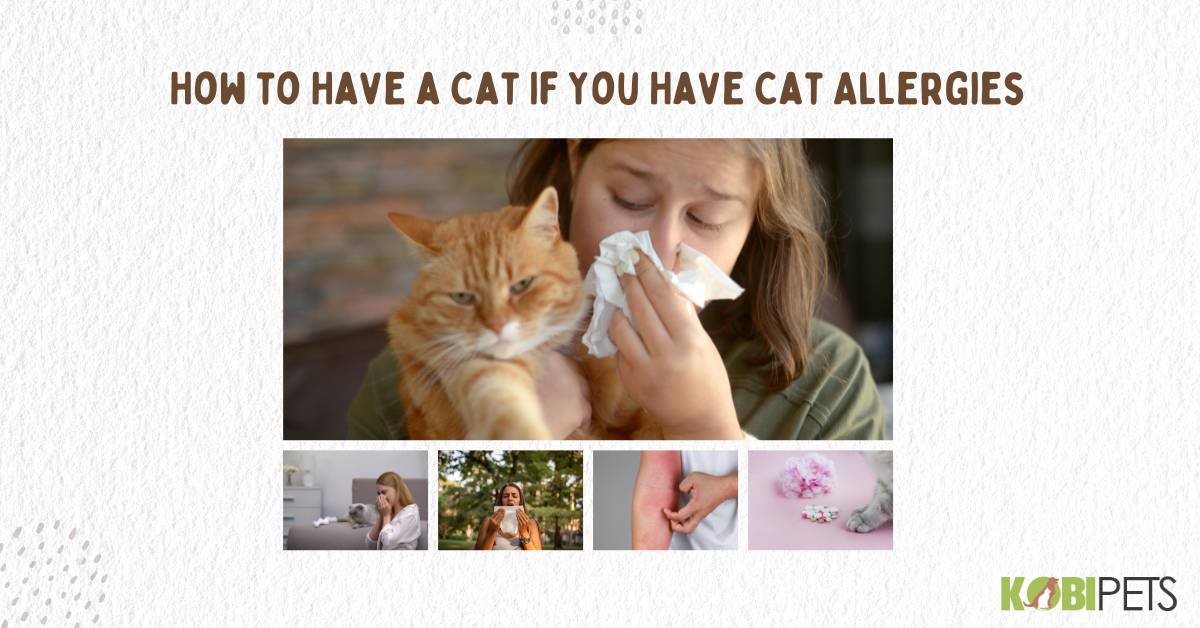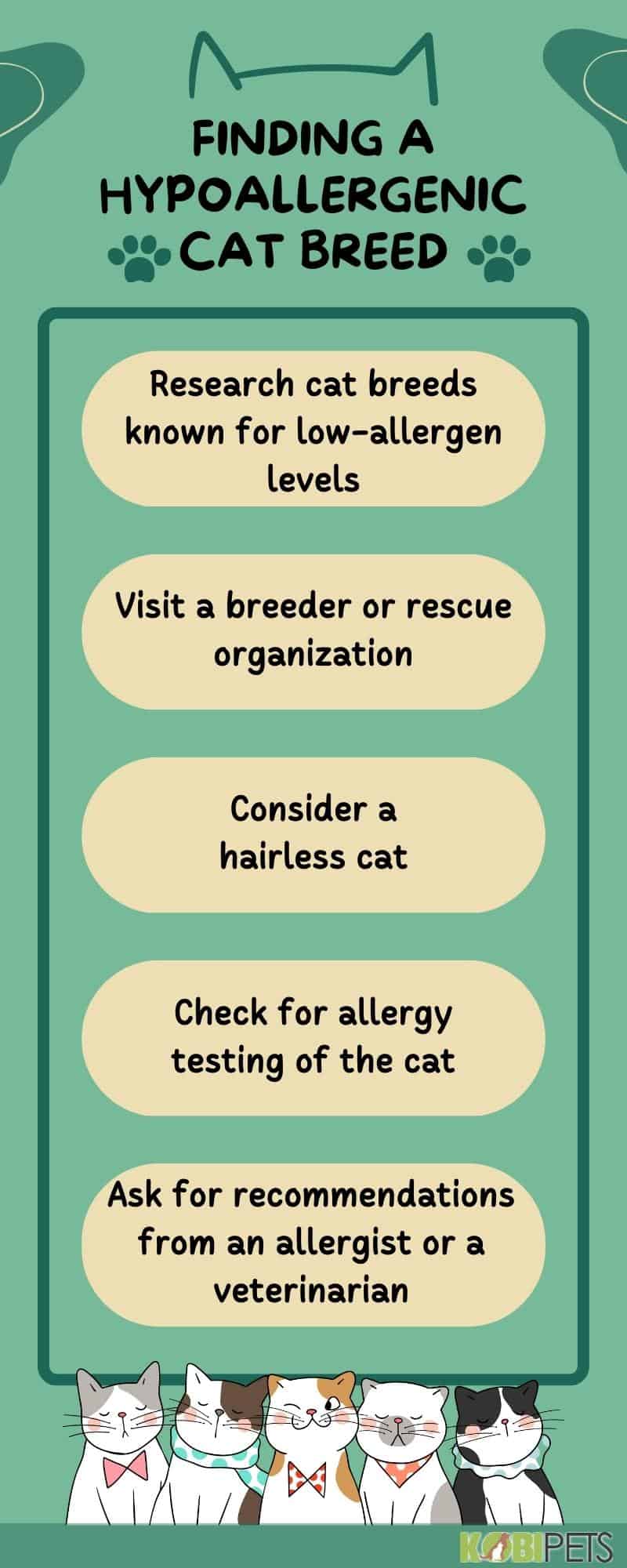
Many people love cats but are allergic to them. It can be a difficult situation, as the symptoms can range from mild to severe, and can include sneezing, runny nose, itchy eyes, and even difficulty breathing. Despite this, it is possible to have a cat if you have allergies. The key is to take certain precautions and make some adjustments to your home and lifestyle.
With the right approach, you can minimize your symptoms and enjoy the company of your feline friend without discomfort. In this article, we will explore some tips and strategies for living with cat allergies and keeping a cat.
Understanding Cat Allergies and Symptoms
Understanding cat allergies and their symptoms are important to effectively manage and live with them.
- Cat allergies are caused by proteins found in a cat’s dander, saliva, and urine.
- Symptoms can include sneezing, runny nose, itchy eyes, and difficulty breathing.
- Allergic reactions can vary from person to person and can range from mild to severe.
- Allergic symptoms can occur immediately after exposure or may take several hours to develop.
- Cat allergies can be mistaken for other conditions such as colds or sinus infections.
Common symptoms include sneezing, runny nose, itchy eyes, and difficulty breathing. These symptoms can vary from person to person and can range from mild to severe. Additionally, allergic reactions can occur immediately after exposure or may take several hours to develop, and can be mistaken for other conditions such as colds or sinus infections.

Finding a Hypoallergenic Cat Breed
Many cat lovers with allergies assume that they cannot have a cat as a pet, but certain cat breeds produce fewer allergens than others. These breeds are known as “hypoallergenic” cats. These cats are less likely to trigger an allergic reaction, making them a great option for people with allergies. Finding the right hypoallergenic cat breed can be a bit of a challenge, but with some research and effort, it is possible to find the perfect feline companion.
Below are some tips and strategies for finding a hypoallergenic cat breed that is compatible with your allergies and lifestyle.
- Research cat breeds known for low-allergen levels: Some breeds, such as the Sphynx, Bengal, and Russian Blue, are known to produce fewer allergens than others. Research these breeds and their characteristics to see if they would be a good fit for you.
- Visit a breeder or rescue organization: Many breeders and rescue organizations specialize in hypoallergenic cats and may have cats available for adoption. They can also provide information on the breed and any specific traits or characteristics that can help reduce allergens.
- Consider a hairless cat: Cat breeds without hair, such as the Sphynx, produce fewer allergens than breeds with hair, as they don’t shed as much.
- Check for allergy testing of the cat: Some breeders may have cats that have been allergy-tested, which means that they produce fewer allergens than the typical cat.
- Ask for recommendations from an allergist or a veterinarian: They may have suggestions for breeds that may be less likely to trigger an allergic reaction, as well as other tips for reducing exposure to allergens.
Tips for Reducing Allergen Exposure in Your Home
Reducing allergen exposure in your home is crucial for managing cat allergies. Below are the key tips of reducing allergen exposure when you havefor cat:
- Regularly vacuum and dust your home: This will help to remove any stray cat dander or hair that may be present in your home.
- Use an air purifier with a HEPA filter: This type of filter is designed to trap small particles like dander and hair, making the air inside your home cleaner.
- Wash your bedding and upholstered furniture regularly: Dander and hair can accumulate on these surfaces, so regular washing can help to reduce your exposure.
- Keep your cat out of certain rooms: If you have a room that you use frequently such as a bedroom, it is best to keep your cat out of it, it will help to limit the amount of dander and hair in those spaces.
- Groom your cat regularly: Grooming your cat can help to reduce the amount of dander and hair they shed, which can in turn reduce your exposure to allergens.
- Avoid carpeted floors: Hardwood or tile flooring can be easier to clean, as it will be easier to vacuum and sweep away hair and dander.
- Regularly clean the cat’s litter box: Dander and hair can be stirred up when you are cleaning the litter box and can cause you to have an allergic reaction.
- Consult with your allergist and veterinarian for more advice: They may be able to provide you with additional tips for reducing your exposure to cat allergens.

Medications and Treatments for Cat Allergies
Managing cat allergies may require a combination of treatments and medications. Some of the common options include:
- Antihistamines: These medications block the effects of histamine, which is a chemical that the body releases during an allergic reaction. This helps to relieve symptoms such as sneezing, runny nose, and itchy eyes.
- Nasal sprays: These sprays can reduce congestion and other nasal symptoms by shrinking the blood vessels in the nasal passages.
- Decongestants: These medications can relieve nasal congestion by narrowing the blood vessels in the nasal passages.
- Corticosteroids: These medications can reduce inflammation and provide relief for more severe symptoms, such as difficulty breathing.
- Allergen immunotherapy: This treatment involves administering small doses of the allergen over time to help the body build up a tolerance to the allergens.
- Sublingual immunotherapy: Similar to allergy shots, but given under the tongue
It’s important to remember that not all medications and treatments work for everyone and it is always best to consult with a healthcare professional to determine the best course of treatment for your situation.

Grooming and Care for Your Cat
Grooming and caring for your cat is a crucial aspect of managing cat allergies. Regularly brushing, bathing, trimming claws, cleaning the litter box, and providing a healthy diet for your cat can help reduce the number of allergens present in your home. Brushing your cat’s coat regularly helps to remove loose hair, dirt, and dander, which can greatly reduce the number of allergens circulating in your home.
Bathing your cat can also help remove dirt, dander, and loose hair and leave your cat smelling fresh. Trimming your cat’s claws will not only prevent them from tearing and scratching furniture and people but also from spreading dander around the house. A clean litter box is also important to avoid any allergic reaction. A healthy diet can help maintain the cat’s coat, skin, and overall health which in turn may reduce shedding and dander.
Keeping your cat active with regular playtime and exercise can keep your cat happy, minimize grooming and reduce dander. Consult with a veterinarian for guidance on the proper grooming schedule for your cat, and they can detect any health issues that may be causing excessive grooming or shedding.

Coping with Allergies and Maintaining Quality of Life
Coping with cat allergies can be a challenge, but it’s important to remember that with the right approach and management, it is possible to maintain a good quality of life. One way to cope with allergies is to take steps to minimize your exposure to allergens, such as keeping your cat out of certain rooms, regularly vacuuming and dusting, and using an air purifier with a HEPA filter.
Additionally, it is also important to consider medications and treatments that are appropriate for your symptoms and allergies, such as antihistamines, nasal sprays, and allergen immunotherapy.
Another way to cope with allergies is to try to change your mindset, focusing on the positive aspects of having a cat and the joy they bring. Also, it can be helpful to be open to trying different management techniques to find the ones that work best for you. it’s also important to have an open line of communication with your allergist and/or doctor, as they can offer guidance and support throughout the process.
Living with cat allergies can be challenging but it is possible to maintain a good quality of life. By taking the right steps to minimize exposure, using appropriate medications and treatments, and having a positive attitude, you can still enjoy the companionship of your feline friend.

In conclusion
It is possible to have a cat even if you have cat allergies. By understanding your symptoms and taking the right steps to minimize your allergen exposure, you can reduce your discomfort and enjoy the companionship of your feline friend. Finding a hypoallergenic cat breed, taking medications and treatments, and following good grooming and care practices can all help to alleviate your symptoms.
It’s also important to consult with an allergist and vet to find the best way to manage your allergies and to make sure that you can provide the best care for your cat. With the right approach, you can have a happy and healthy relationship with your feline companion despite your allergies.







